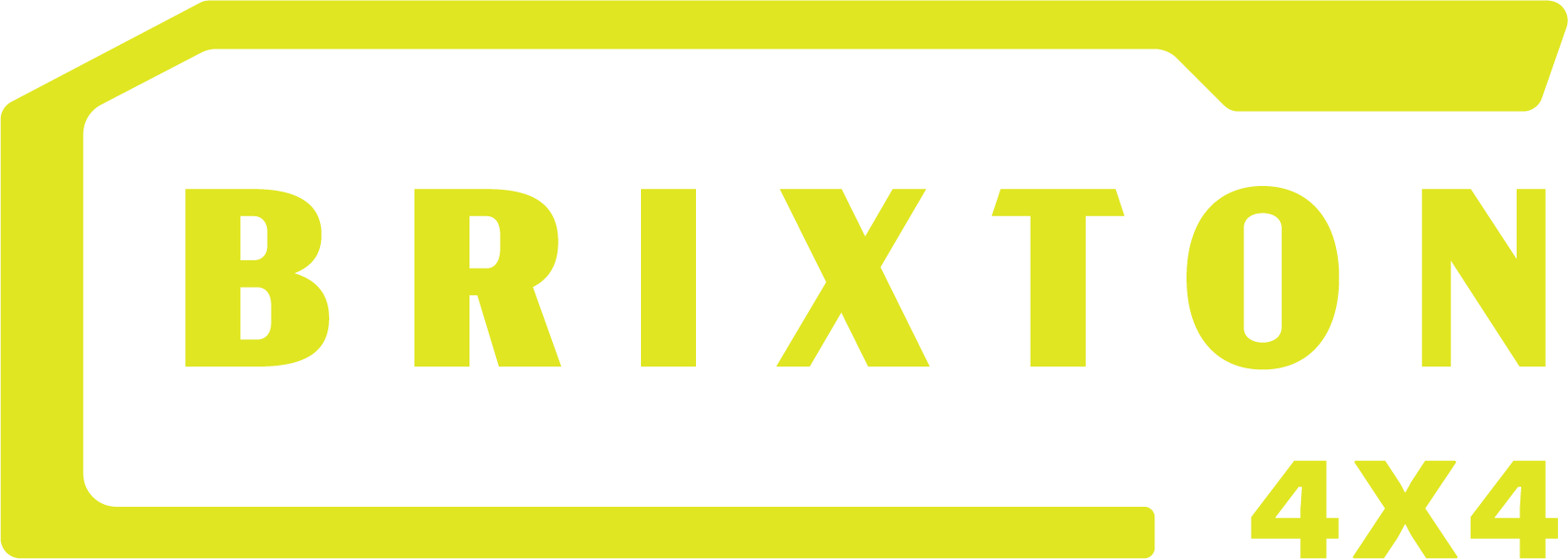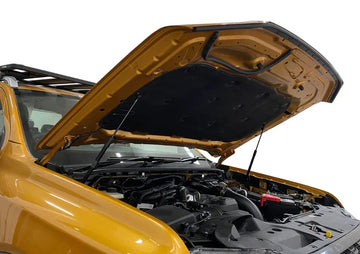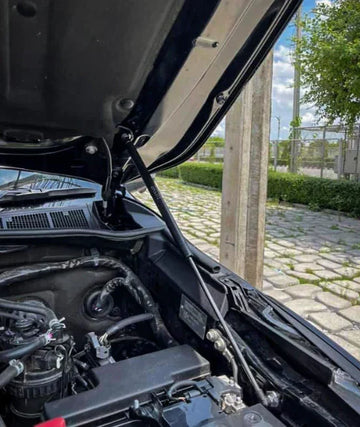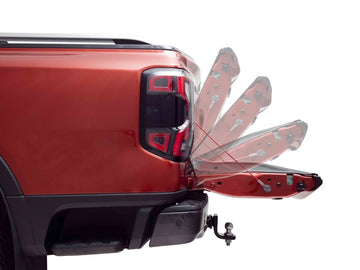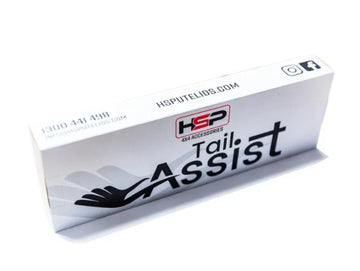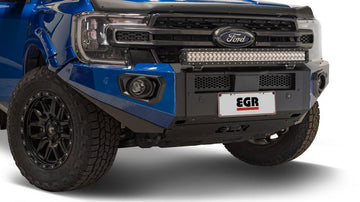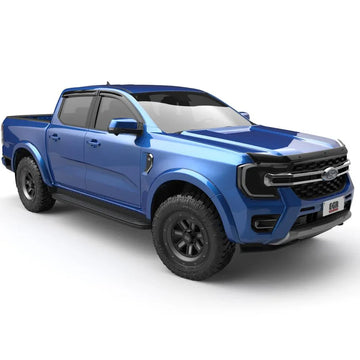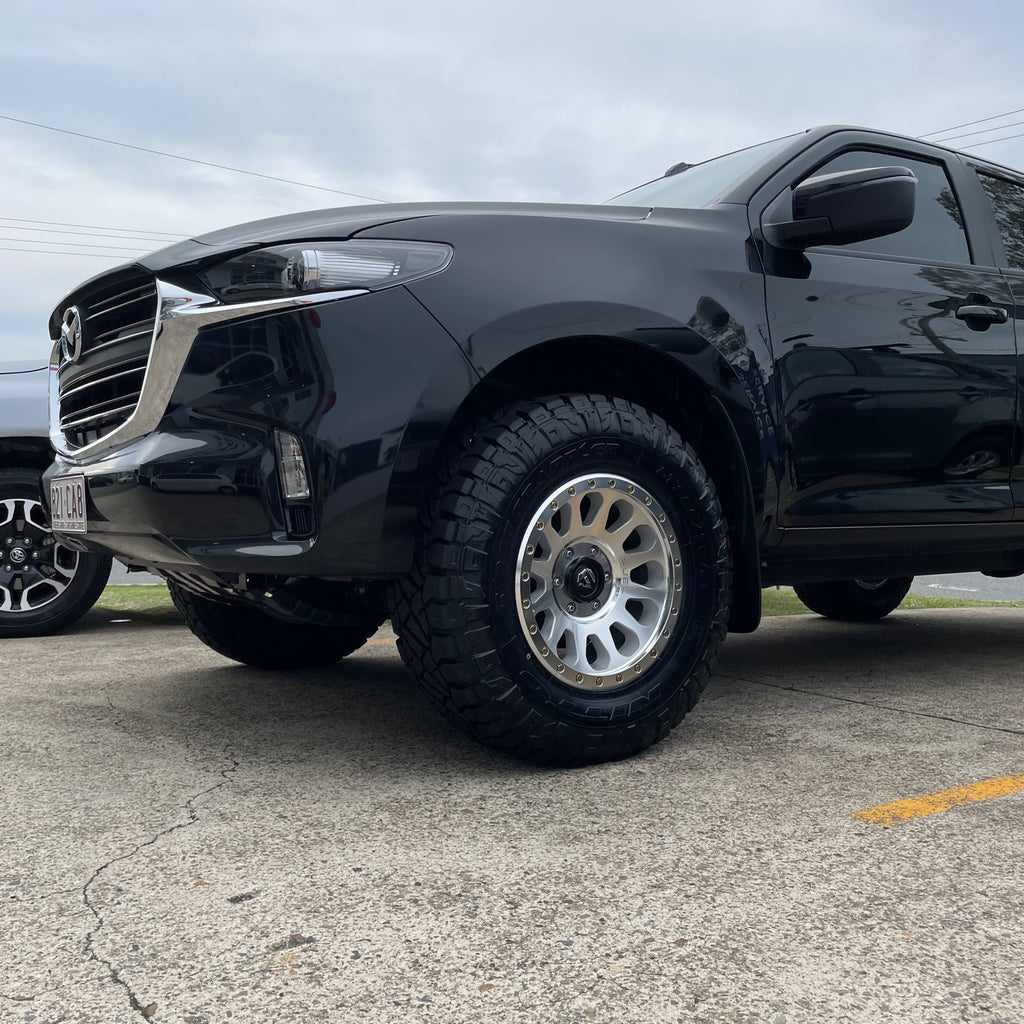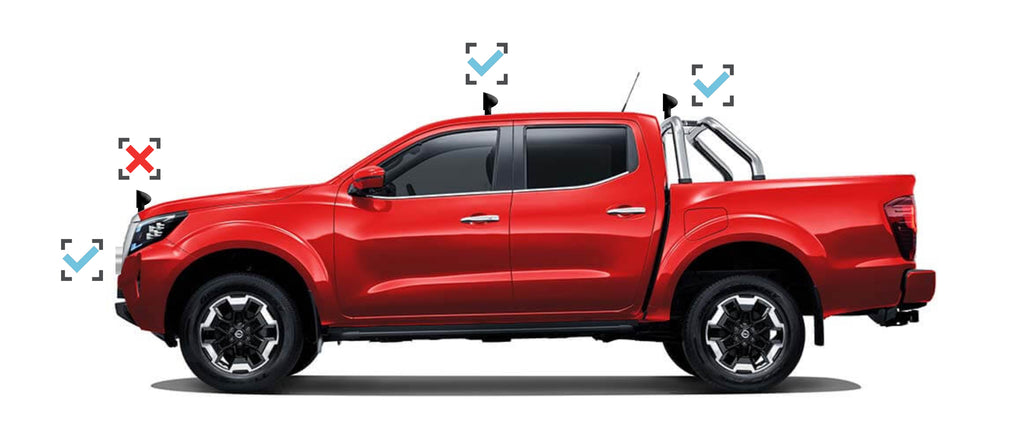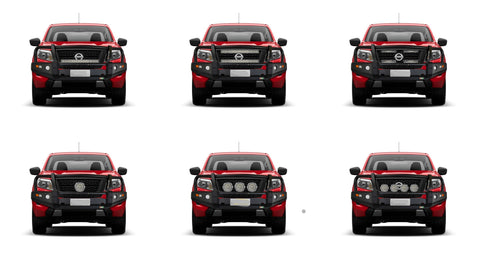FITTING NEW DRIVING LIGHT

When you add supplementary driving lights to your vehicle, the lights must be designed and securely fitted in a way that:
- minimises the likelihood of injury to a person making contact with the vehicle in an unfortunate event of a crash with a pedestrian;
- does not obstruct the driver’s view of the road and traffic to the front or side of the vehicle;
- the light emitted does not cause discomfort to the driver either directly or indirectly through devices for indirect vision and/or other reflecting surfaces of the vehicle; and
- must remain switched off when high beam headlights are not in operation; and
- must automatically switch off when high beam headlights are either turned off or the headlamps are dipped.
- Additional driving lights that have daytime running lights incorporated within the light, please ensure fitment is in compliance with ADR 13/00.
LIGHT USAGE WHILST DRIVING
If you have added additional driving lights to your vehicle you cannot use these supplementary lights when traveling within 200 metres behind another vehicle, that is traveling in the same direction or within 200 metres of an oncoming vehicle, traveling in the other direction. This rule is the same rule that applies to the use of standard vehicle high beam headlights.
IMPORTANT: Some additional driving lights project a beam to a greater distance than 200m. When using an additional driving light with greater than 200m beam distance you must consider the projected distance of the light as this can create a substantial safety risk for oncoming drivers who may be impacted by such lights at a greater distance, and adversely affect vehicles traveling in the same direction in front of your vehicle.
FITMENT OF ADDITIONAL DRIVING LIGHTS
The maximum number of additional driving lights permitted on a single vehicle is 4. These supplementary lights must be fitted symmetrically, same position on either side of the vehicle, with the position being at the front of the vehicle, front facing only and no higher than the front edge of the bonnet if fitted to the bull bar or nudge bar.
If installing a single additional driving light (i.e. Supernova LED 32 Inch Single Row Lightbar) it must be installed horizontally and located symmetrically about the longitudinal centre line of the vehicle.
Lights fitted to a vehicle, which will be used whilst driving should only product a white colour stream and used in conjunction with the vehicles standard high beam headlights. When headlights are turned to low beam, the additional vehicle driving lights should automatically be switched off.
Note: Any additional driving lights fitted to the vehicle must not obstruct or interfere with the light emitted by any of the headlights, indicators or parking lights fitted to the vehicle. An LED light bar is considered to be one driving light if all the LEDs operate together simultaneously. If an LED light bar has different parts or sections that can be switched on or off independent of other parts or sections, then each independently controlled section counts as a driving light.
ATTACHMENT POINTS ON BULL BARS & NUDGE BARS
Any additional accessories including additional driving lights must not be installed on top of a bull bar or nudge bar (where the additional driving lights are higher than the front edge of the bonnet), or protruding forward of the bumper bar, bull bar, or nudge bar.
The mounting brackets of any additional driving lights must be rounded and must not have any sharp, pointed or angular edges to ensure that the risk of injury to a pedestrian is minimised (should a pedestrian be hit by the vehicle).
Figure 1 shows the locations that additional driving lights may and may not be fitted.
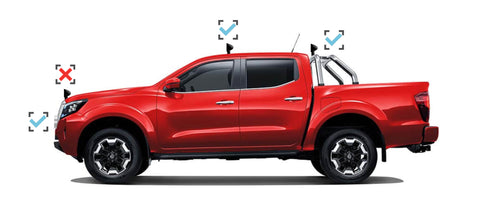
Figure 2 shows the correct way of mounting some additional driving lights in a combination of ways; note that the vehicles headlights, indicators or parking lights are not obstructed.
OPTIONAL FRONT LIGHTS
DAYTIME RUNNING LIGHTS (DRLs)
Daytime running lights are lights used to increase the visibility of a vehicle when driving during the day. These lights are available as an optional after-market accessory or manufactured in some new model vehicles.
These lights must produce a white light, with a maximum of 2 additional lights.
Position:
- Fitted symmetrically (same position on both sides of the vehicle) at the front of the vehicle (as can be seen in the above images)
- In height: above the ground not less than 250mm nor more than 1,500mm
- Not more than 400mm from the sides (extreme outer edge) of the vehicle; at least 600mm apart between the inner edges, may be reduced to 400mm where the overall width of the vehicle is less than 1,300mm.
- The angle of the beam may only be outwards 20° and inwards 20° and upwards 10° and downwards 10°.
FOG LIGHTS
Front fog lights provide a wide, bar-shaped beam of light with a sharp cutoff (dark above, bright below) at the top, and are generally aimed and mounted low. They are intended for use at low speed to increase the illumination directed towards the road surface and verges in conditions of poor visibility due to rain, fog, dust or snow.
These lights must produce a white or yellow light, with a maximum of 2 additional lights
Position: Fitted symmetrically (same position on both sides of the vehicle) at the front of the vehicle;
No higher than the top of the low beam headlights;
Not more than 400mm from the sides (extreme outer edge) of the vehicle;
At least 600mm apart; and not less than 250mm above the ground.
Fog lights must be able to be operated independently from the headlights and driving lights. As a minimum, they must only be able to operate when the park lights are on.
SEARCH / WORK LIGHTS
Additional lights intended to be used for temporary purposes (such as the reading of signs, handling or adjusting of loads or providing additional illumination in off-road situations) may be fitted to a vehicle in any location.
Note: The fitment of LED light bars as work lights facing forward is prohibited unless installed below the driver’s eyes.
General Requirements: Work lights must be fitted with a tell-tale illuminated labeled rocker switch to warn the driver the light is on.
Note: A driver must not use or allow to be used, any light fitted to or in the driver's vehicle to dazzle, or in a way that is likely to dazzle, another road user.
